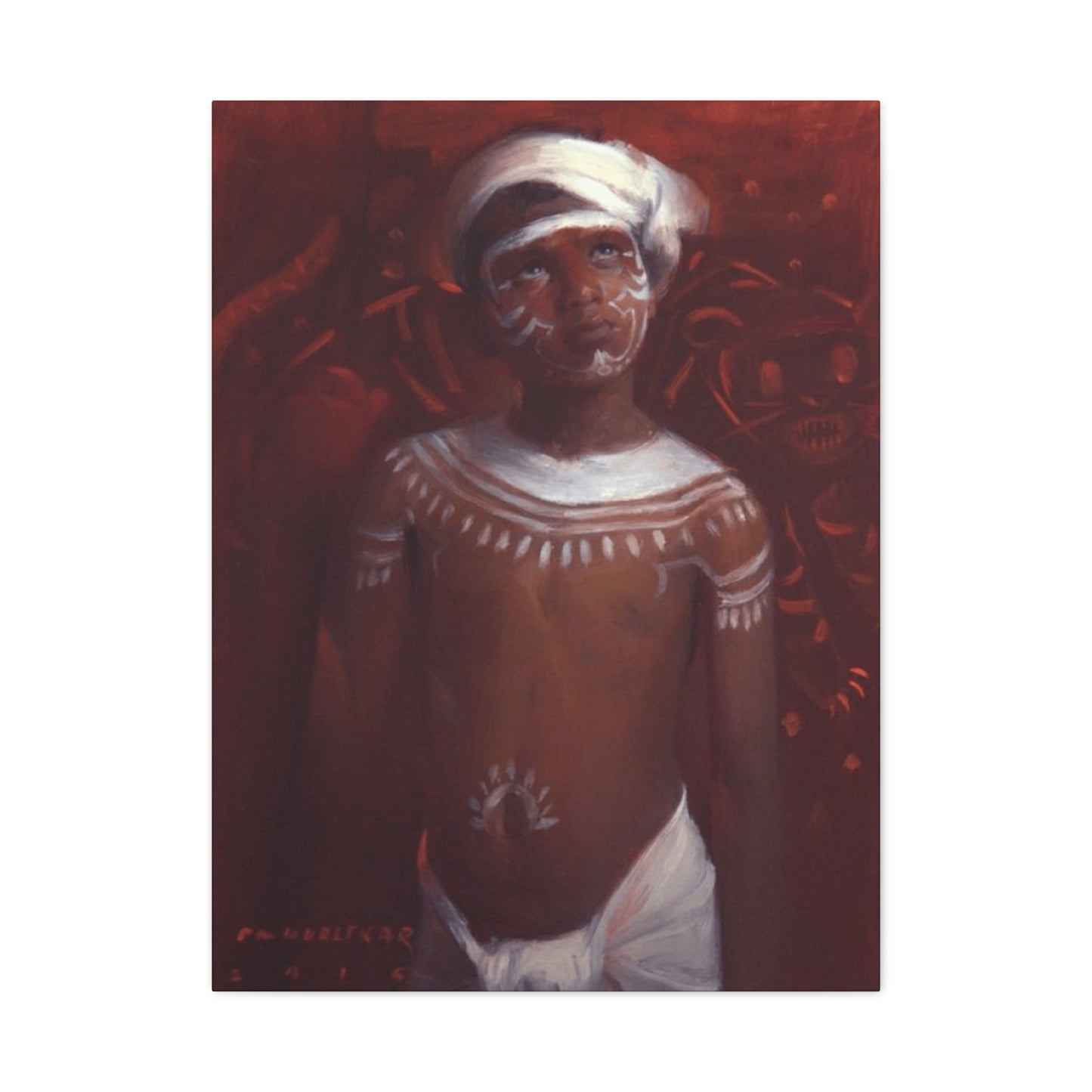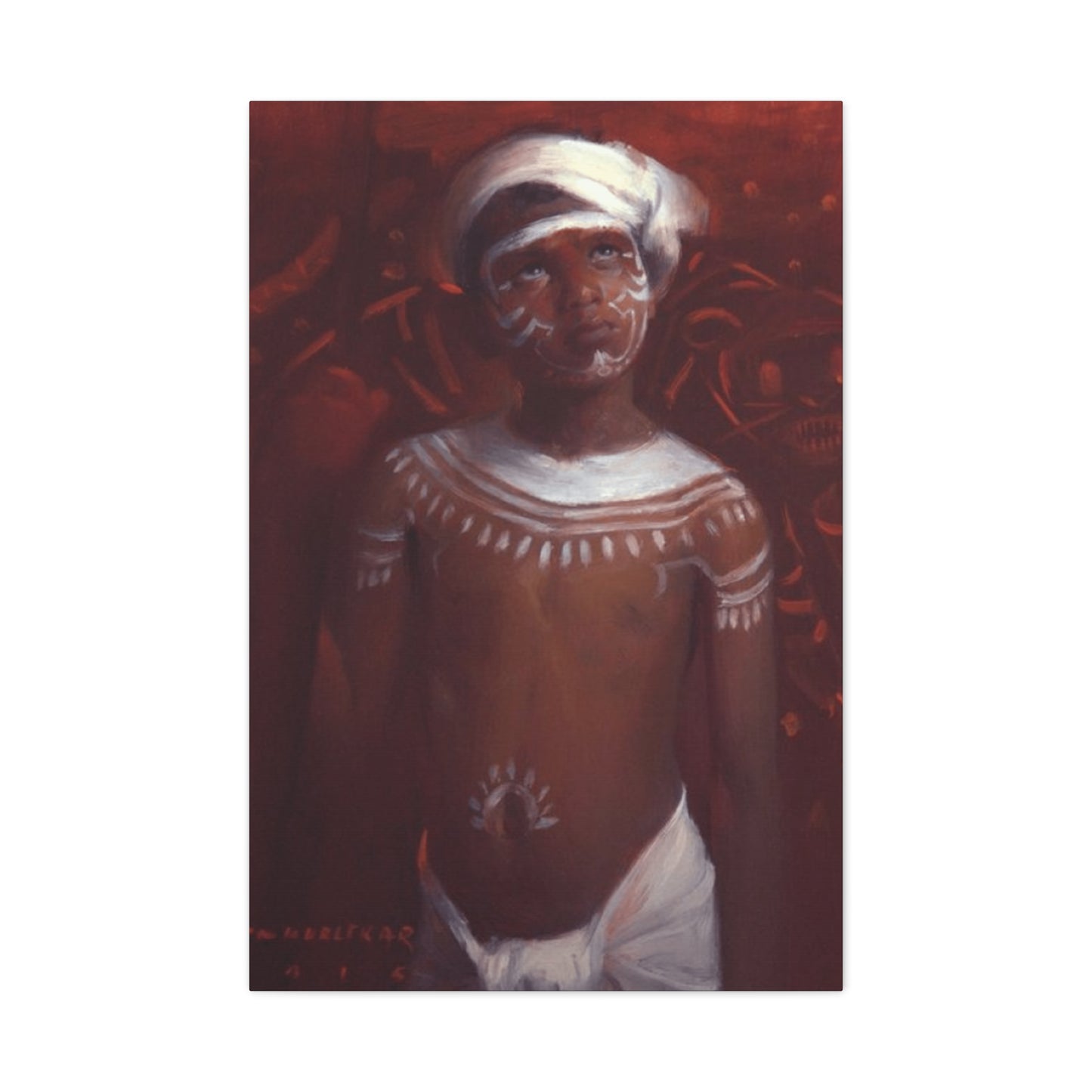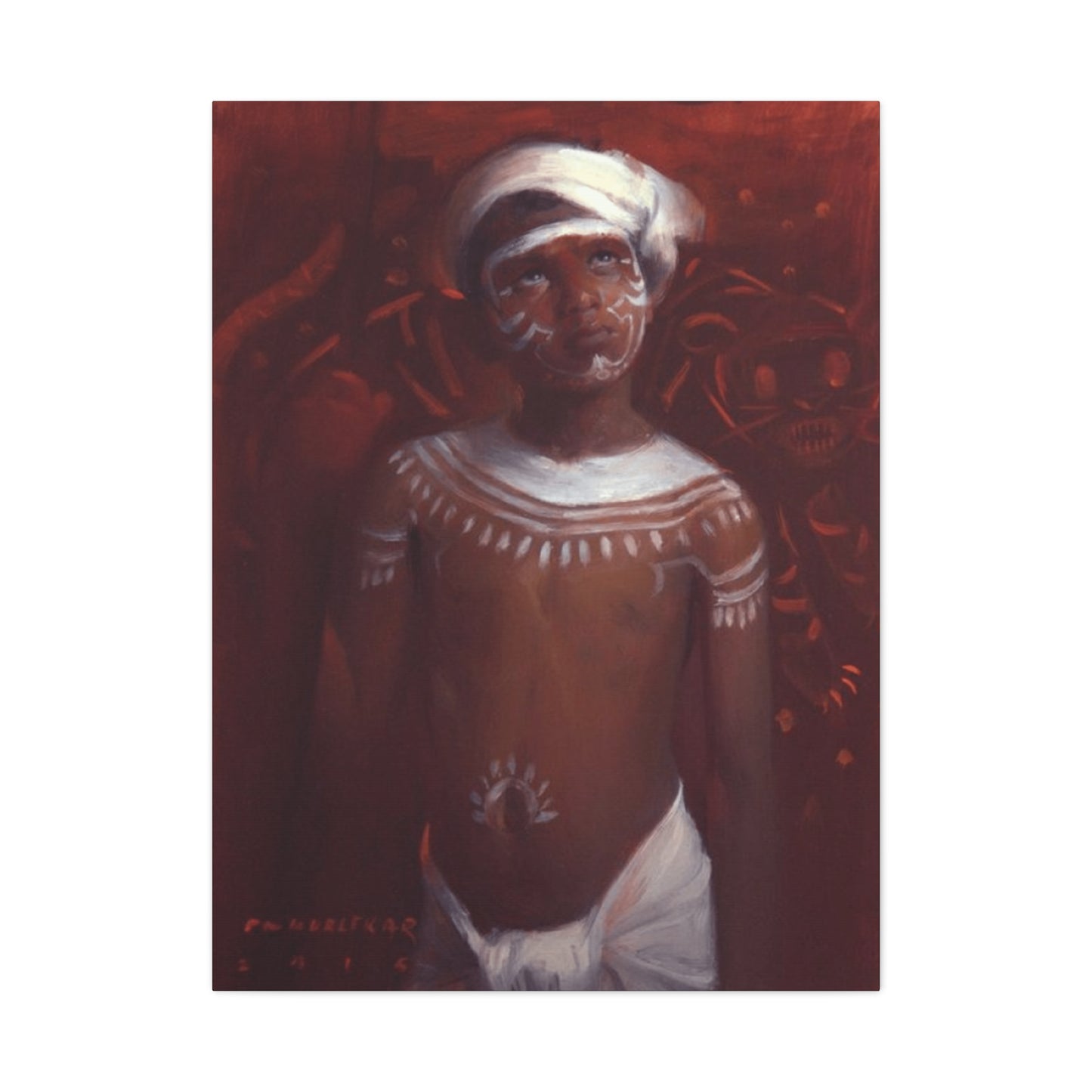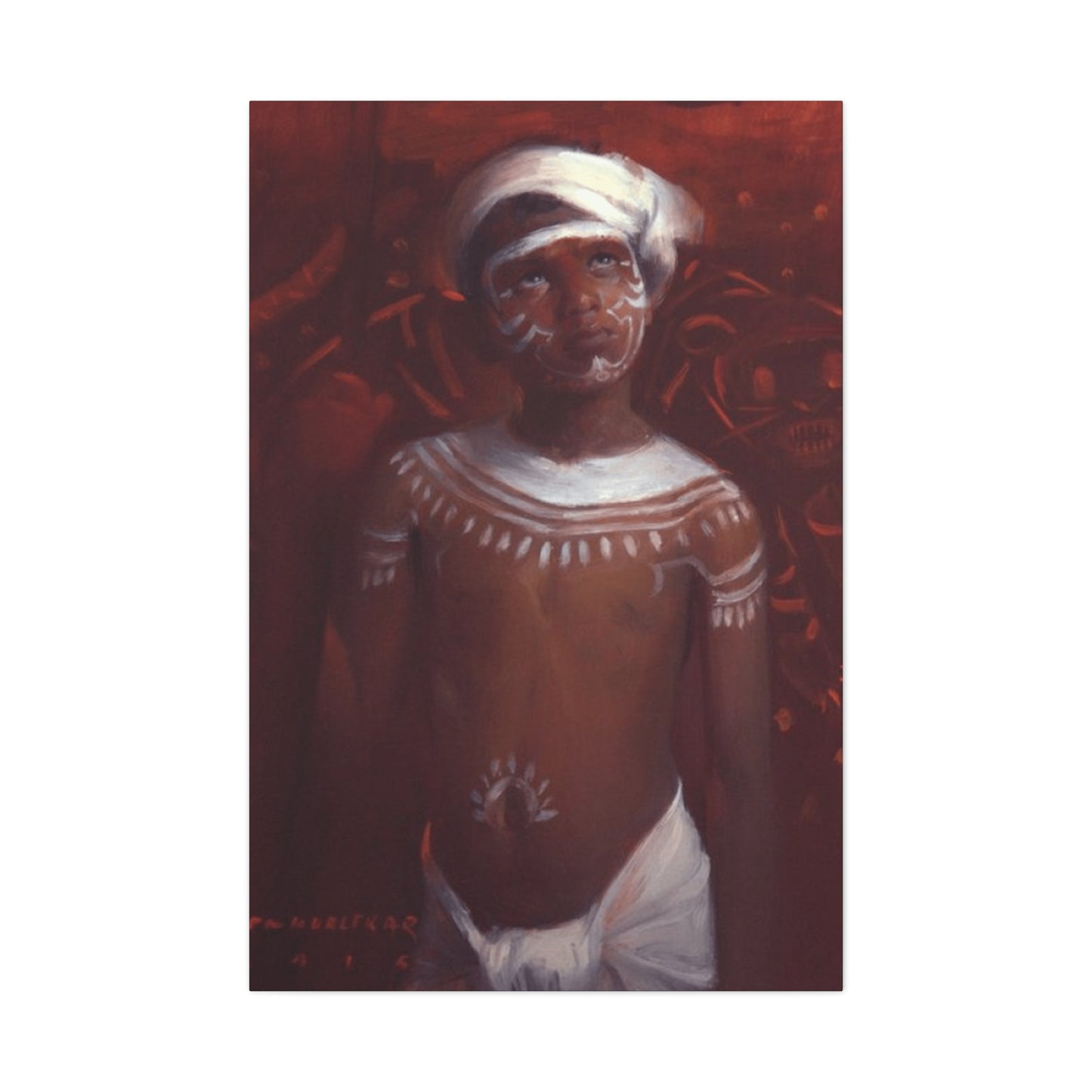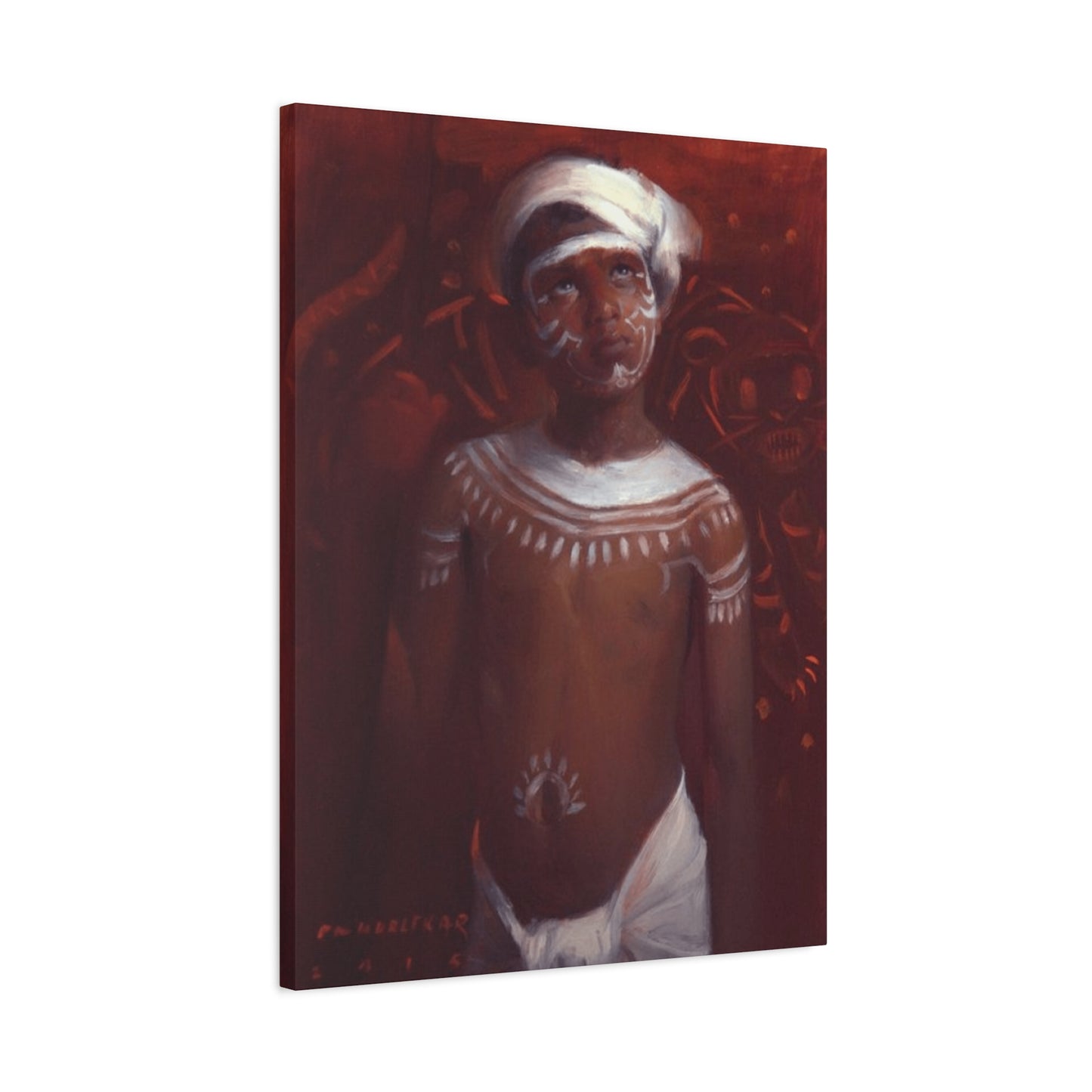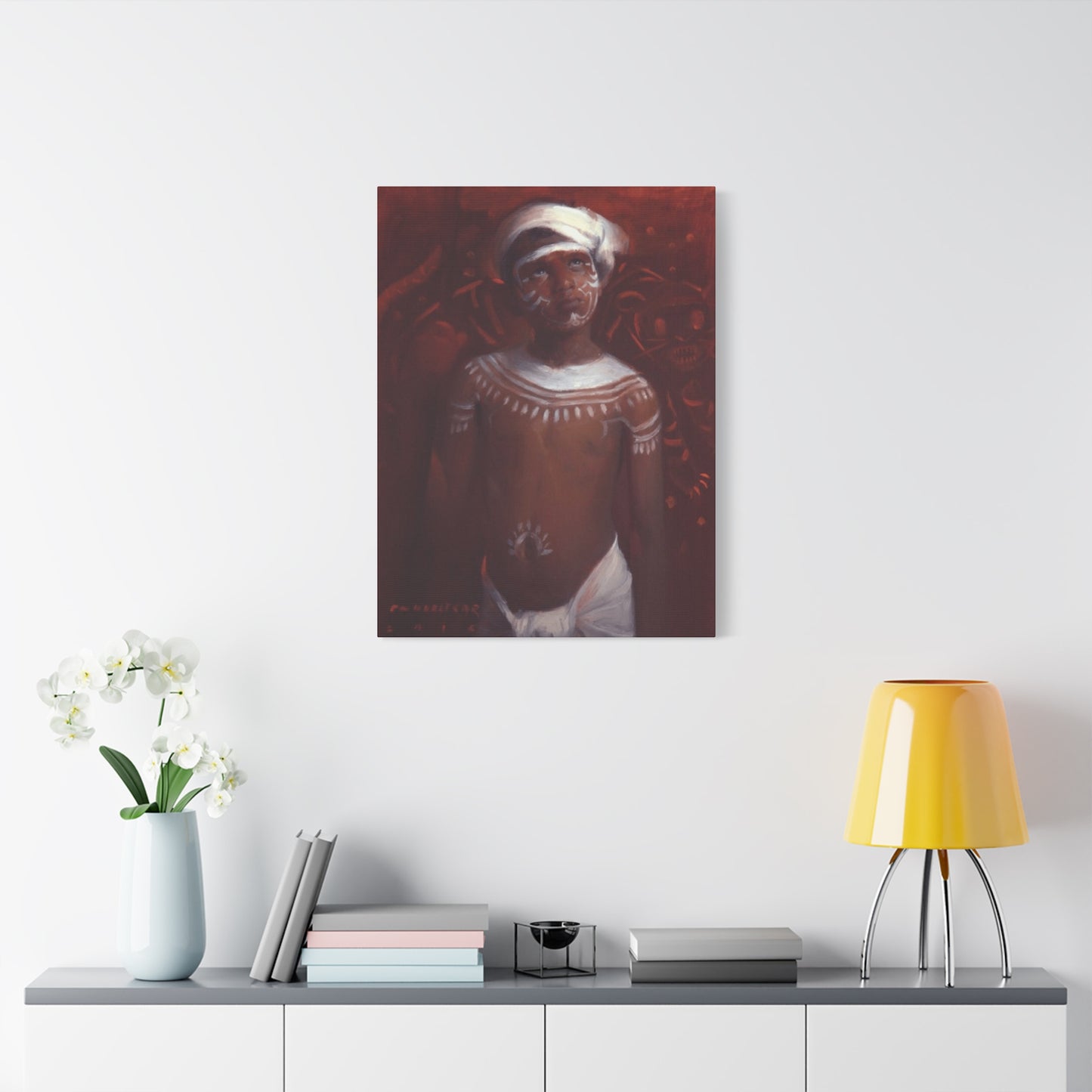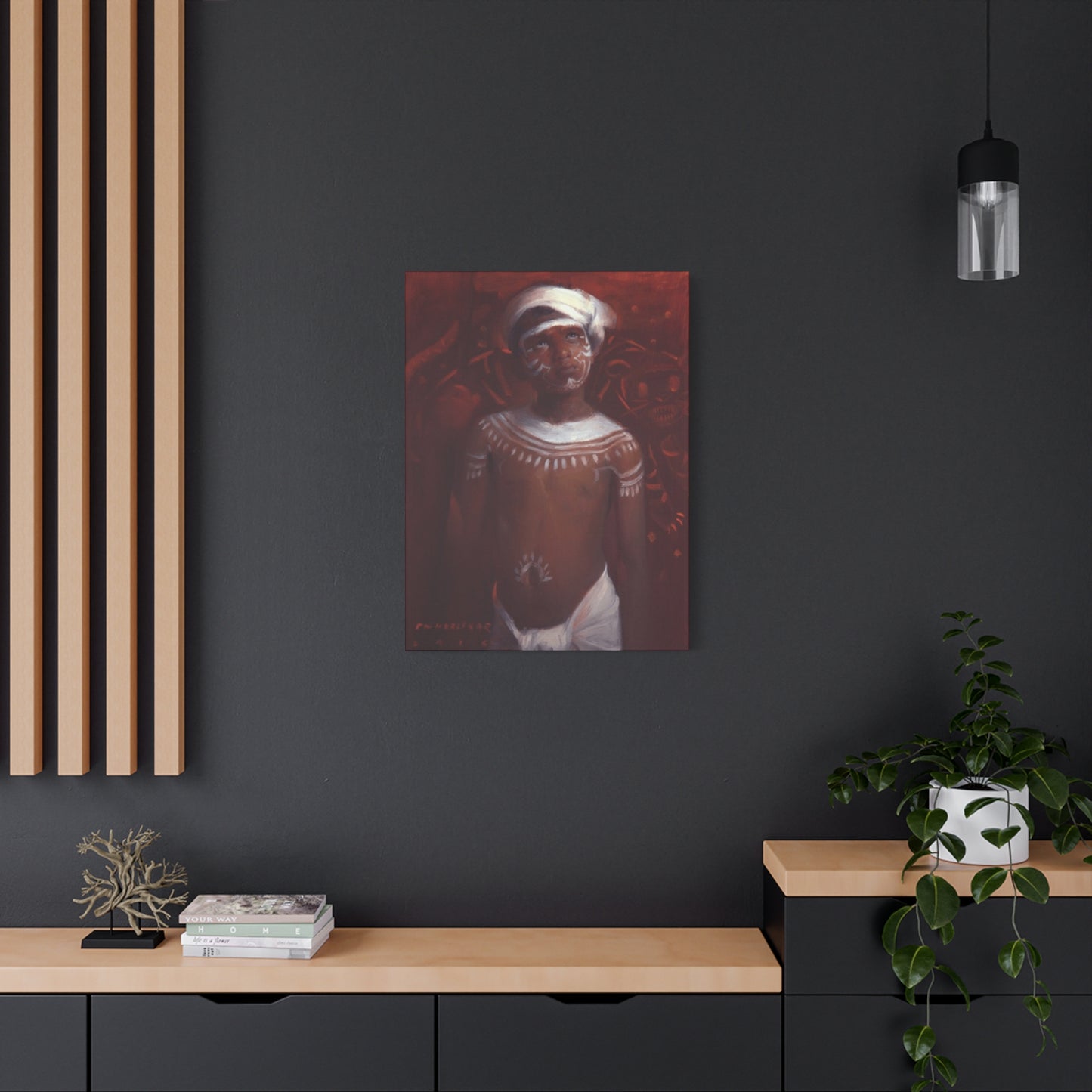The Soul of an Artist: What a Portrait of Pramod Kurlekar Reveals wall art
The world of contemporary art has witnessed remarkable transformations over the decades, yet certain artists manage to capture timeless essence through their distinctive approach to human expression. Among these exceptional talents stands an artist whose work transcends conventional boundaries, creating pieces that resonate deeply with viewers across cultural and geographical divides. This comprehensive exploration delves into the magnificent world of portraiture that has captivated art enthusiasts globally, examining the nuanced techniques, emotional depth, and cultural significance that define this extraordinary artistic journey.
Kurlekar on Your Wall
When considering the addition of meaningful artwork to residential environments, few choices offer the profound impact of carefully crafted portraits. The presence of such pieces transforms ordinary living areas into galleries of human emotion and artistic excellence. Each carefully rendered face tells a story that extends far beyond the canvas, inviting viewers into a dialogue with the artist's vision and the subject's essence.
The technical mastery evident in these works stems from years of dedicated practice and an innate understanding of human anatomy and expression. Every brushstroke serves a purpose, whether defining the subtle curve of a cheekbone or capturing the fleeting glint in an eye. This meticulous attention to detail creates artworks that reward prolonged observation, revealing new aspects of character and personality with each viewing.
Contemporary collectors increasingly recognize the value of investing in pieces that demonstrate both artistic merit and emotional resonance. These portraits represent more than decorative elements; they function as windows into the human experience, offering glimpses of universal emotions and individual stories. The careful balance between technical precision and emotional authenticity distinguishes these works from mass-produced alternatives, making them valuable additions to any discerning collection.
The cultural significance of such portraiture extends beyond aesthetic appreciation to encompass broader themes of identity, representation, and artistic heritage. These works contribute to ongoing conversations about the role of traditional techniques in contemporary art, demonstrating that classical approaches to portraiture remain relevant and powerful in today's artistic landscape.
Portraits That Speak
The phenomenon of artwork that appears to communicate directly with viewers represents one of the most compelling aspects of masterful portraiture. This quality emerges from the artist's ability to capture not merely physical likeness but the essential character that animates each subject. The resulting pieces possess an almost magnetic quality, drawing observers into extended contemplation and emotional engagement.
The psychological impact of encountering such expressive artwork cannot be understated. Research in art therapy and environmental psychology suggests that meaningful visual art can significantly influence mood, creativity, and overall well-being. When individuals regularly encounter portraits that demonstrate genuine emotional depth, they often report enhanced appreciation for human complexity and increased empathy in their daily interactions.
The technical elements that contribute to this communicative quality involve sophisticated understanding of light, shadow, and color theory. The artist's manipulation of these elements creates subtle gradations that suggest volume, texture, and dimensionality while maintaining the flat surface integrity of the canvas. This balance between illusion and reality creates the tension necessary for truly engaging artwork.
Furthermore, the selection of subjects plays a crucial role in determining the ultimate impact of each piece. The artist's eye for identifying compelling individuals whose faces tell stories creates a body of work that collectively explores themes of humanity, dignity, and individual worth. These portraits celebrate the diversity of human experience while highlighting universal emotions and characteristics.
Art With Soul
The concept of artistic soul encompasses those intangible qualities that distinguish truly meaningful artwork from technically proficient but emotionally vacant pieces. This distinction becomes particularly important in portraiture, where the artist's responsibility extends beyond accurate representation to include authentic emotional interpretation and cultural sensitivity.
The development of such soulful artistry requires not only technical skill but also deep empathy and cultural understanding. Artists who achieve this level of expression demonstrate an ability to connect with their subjects on profound levels, translating these connections into visual form through carefully considered compositional choices and color palettes.
The historical context of portraiture reveals that the most enduring works have consistently been those that capture something essential about their subjects while reflecting the artist's unique perspective and cultural background. This balance between objective representation and subjective interpretation creates artwork that remains relevant across generations and cultural boundaries.
Contemporary viewers often struggle to identify authentic artistic expression in an age of digital reproduction and mass production. The presence of genuine emotional depth in artwork serves as a counterbalance to these trends, offering experiences that cannot be replicated through technological means. The subtle variations in brushwork, the careful modulation of color, and the deliberate compositional choices all contribute to creating unique objects that reward direct observation.
Kurlekar's Brush of Emotion
The distinctive approach to emotional expression through portraiture represents years of artistic development and cultural immersion. This evolution reflects not only technical growth but also deepening understanding of human psychology and the visual elements that most effectively convey complex emotional states.
The artist's technique demonstrates sophisticated understanding of how different brushwork approaches can suggest various emotional qualities. Smooth, blended passages might convey serenity or contemplation, while more visible brushstrokes could suggest energy, passion, or internal conflict. These technical choices work in concert with color selection and compositional arrangement to create cohesive emotional statements.
The cultural influences evident in this body of work reflect broader traditions of portraiture while incorporating contemporary sensibilities and individual artistic vision. This synthesis creates artwork that honors traditional approaches while remaining thoroughly modern in its execution and emotional impact. The resulting pieces speak to contemporary audiences while maintaining connections to historical artistic practices.
The process of creating such emotionally resonant artwork involves extensive preparation and contemplation. Each portrait begins with careful study of the subject, involving not only physical observation but also attempts to understand personality, background, and individual story. This preparatory work influences every subsequent decision in the creation process, from initial sketching to final color applications.
Feel the Gaze
The power of direct eye contact in portraiture has fascinated artists and viewers throughout history. When successfully executed, this element creates immediate connection between artwork and observer, establishing a sense of presence that transcends the physical boundaries of the canvas. The technical challenges involved in achieving this effect require masterful understanding of anatomy, perspective, and psychological expression.
The positioning of eyes within the composition plays a crucial role in determining the overall impact of each portrait. Subtle adjustments in angle, focus, and expression can dramatically alter the viewer's response to the artwork. Artists who master this aspect of portraiture gain the ability to direct attention, suggest mood, and create lasting impressions through their careful manipulation of this most expressive facial feature.
The cultural significance of eye contact varies across different societies, adding layers of meaning to portraiture that incorporates this element effectively. Understanding these cultural nuances allows artists to create works that communicate appropriately with diverse audiences while maintaining universal appeal. This cultural sensitivity demonstrates artistic maturity and broadens the potential impact of each piece.
The technical aspects of rendering convincing eyes involve precise understanding of their three-dimensional structure and the way light interacts with various surfaces. The cornea, iris, pupil, and surrounding tissues each reflect and absorb light differently, creating complex patterns that must be carefully observed and translated into paint. Mastery of these technical elements enables artists to create the illusion of living presence within their portraits.
Elegant Indian Portraiture
The rich traditions of Indian art provide extensive inspiration for contemporary portrait artists, offering sophisticated approaches to color, composition, and cultural representation. These historical influences merge with modern techniques to create artwork that honors cultural heritage while speaking to contemporary audiences across cultural boundaries.
The color palettes traditionally associated with Indian art offer unique opportunities for emotional expression and cultural reference. Warm earth tones, rich jewel colors, and subtle metallic accents create distinctive visual signatures that immediately suggest cultural connections while maintaining universal appeal. The skillful integration of these color traditions with contemporary portrait techniques creates artwork that bridges temporal and cultural divides.
The compositional approaches developed within Indian artistic traditions emphasize balance, harmony, and spiritual significance. These principles translate effectively into contemporary portraiture, providing frameworks for organizing visual elements in ways that enhance rather than distract from the primary subject. The resulting compositions demonstrate sophistication and cultural depth while remaining accessible to diverse audiences.
The representation of Indian subjects within contemporary portraiture carries particular significance in terms of cultural preservation and celebration. These artworks serve not only as individual portraits but also as documents of cultural identity and pride. The respectful and dignified treatment of subjects reflects the artist's commitment to authentic representation and cultural sensitivity.
Figurative Beauty
The pursuit of beauty in figurative art involves complex negotiations between idealization and authentic representation. Contemporary portraiture must balance traditional concepts of aesthetic appeal with modern understanding of diversity, individuality, and authentic character representation. This balance creates opportunities for exploring beauty in its many forms while maintaining artistic integrity.
The technical aspects of achieving figurative beauty require sophisticated understanding of proportion, harmony, and visual balance. These elements must work together to create pleasing compositions while avoiding the trap of superficial prettiness that lacks depth or meaning. The most successful portraits demonstrate that true beauty emerges from authentic character representation rather than idealized perfection.
The cultural definitions of beauty vary significantly across different societies and historical periods, requiring contemporary artists to navigate these differences while creating artwork that speaks to broad audiences. This challenge encourages artistic growth and cultural sensitivity while promoting inclusive approaches to beauty and representation.
The emotional aspects of beauty in portraiture extend beyond physical appearance to encompass character, dignity, and individual worth. Artists who successfully capture these intangible qualities create artwork that celebrates the full spectrum of human beauty while avoiding narrow or exclusionary definitions. This approach creates more meaningful and lasting artistic impact.
Stillness in Paint
The ability to capture moments of quiet contemplation or peaceful repose represents one of the most challenging aspects of contemporary portraiture. These qualities require subtle technical approaches that suggest internal states rather than external action, demanding sophisticated understanding of how visual elements communicate psychological conditions.
The compositional approaches that best convey stillness often involve careful attention to negative areas, balanced arrangements, and restrained color palettes. These elements work together to create sense of calm and contemplation that invites extended viewing and reflection. The resulting artworks provide respite from increasingly busy contemporary environments while offering opportunities for meaningful aesthetic experience.
The psychological benefits of encountering artwork that conveys stillness and peace have been documented in numerous studies of environmental psychology and art therapy. Individuals who regularly engage with such peaceful imagery often report reduced stress levels, improved focus, and enhanced overall well-being. These benefits make such artwork particularly valuable additions to residential and workplace environments.
The technical challenges involved in painting stillness require mastery of subtle gradations, careful edge control, and restrained brushwork. These approaches differ significantly from more dynamic painting techniques, requiring artists to develop different skill sets and approaches to mark-making. The successful execution of such techniques demonstrates artistic maturity and technical versatility.
Art That Reflects You
The phenomenon of viewers seeing themselves reflected in artwork represents one of the most powerful aspects of successful portraiture. This quality emerges from the artist's ability to capture universal human experiences and emotions while maintaining individual character and personality in each subject. The resulting artwork speaks to shared humanity while celebrating individual uniqueness.
The psychological mechanisms underlying this reflective quality involve complex interactions between visual recognition, emotional response, and personal identification. When viewers encounter artwork that successfully balances individual and universal characteristics, they often experience strong emotional connections and lasting impressions. These responses contribute to the artwork's impact and longevity.
The technical elements that contribute to this reflective quality include careful attention to emotional expression, body language, and compositional arrangement. These elements must work together to suggest personality and character while avoiding overly specific details that might limit viewer identification. The balance between specificity and universality requires sophisticated artistic judgment and cultural sensitivity.
The cultural implications of creating artwork that reflects diverse audiences extend beyond aesthetic considerations to encompass broader themes of representation, inclusion, and cultural dialogue. Artists who successfully achieve this reflective quality contribute to important conversations about identity, belonging, and shared human experience.
Quiet Power in Portraits
The concept of quiet power in visual art refers to artwork that commands attention and respect through subtle means rather than dramatic gestures or bold statements. This quality represents sophisticated artistic maturity and demonstrates understanding of how visual elements can create lasting impact without resorting to sensational approaches.
The technical approaches that convey quiet power often involve restrained color palettes, careful compositional balance, and masterful handling of light and shadow. These elements work together to create artwork that rewards careful observation while maintaining strong initial impact. The resulting pieces demonstrate that artistic power can emerge from refinement and subtlety rather than obvious drama.
The cultural significance of quiet power in artwork reflects broader values related to dignity, respect, and thoughtful communication. In an age of increasing visual noise and sensational imagery, artwork that demonstrates quiet confidence and subtle strength provides valuable alternatives for meaningful aesthetic experience.
The long-term impact of artwork that embodies quiet power tends to be more enduring than pieces that rely on immediate shock or surprise for their effect. These works continue to reward repeated viewing and contemplation, revealing new aspects of meaning and beauty over time. This longevity makes them particularly valuable additions to personal collections.
Tradition Meets Canvas
The intersection of traditional artistic techniques with contemporary subject matter and sensibilities creates unique opportunities for meaningful artistic expression. This synthesis honors historical approaches while remaining relevant to contemporary audiences, demonstrating that traditional methods retain their power and significance in modern contexts.
The technical aspects of combining traditional and contemporary approaches require deep understanding of historical methods alongside awareness of current artistic trends and cultural contexts. This knowledge enables artists to make informed decisions about which traditional elements to incorporate and how to adapt them for contemporary purposes.
The cultural implications of this synthesis extend beyond individual artistic practice to encompass broader themes of cultural preservation, innovation, and continuity. Artists who successfully navigate this intersection contribute to ongoing cultural dialogue while maintaining connections to artistic heritage.
The educational value of artwork that demonstrates successful integration of traditional and contemporary elements provides viewers with opportunities to learn about artistic history while experiencing contemporary relevance. These works serve as bridges between past and present, encouraging appreciation for both historical achievement and contemporary innovation.
A Face, A Story
Every human face carries within it the accumulated experiences, emotions, and stories of a lifetime. The artist's ability to recognize and translate these narrative elements into visual form represents one of the most compelling aspects of contemporary portraiture. This storytelling quality transforms individual portraits into windows into broader human experience.
The technical approaches that best capture storytelling elements involve careful attention to the subtle details that suggest character, experience, and personality. These might include the patterns of lines around eyes, the set of shoulders, or the particular way light falls across facial features. Each of these elements contributes to the overall narrative impact of the portrait.
The psychological impact of encountering artwork that tells human stories cannot be understated. These pieces encourage empathy, understanding, and connection between viewers and subjects, fostering broader appreciation for human diversity and individual worth. The resulting emotional engagement creates lasting impressions and meaningful aesthetic experiences.
The cultural responsibility involved in telling others' stories through portraiture requires sensitivity, respect, and authentic representation. Artists who undertake this responsibility must balance artistic interpretation with faithful representation, ensuring that their work honors rather than exploits their subjects' stories and experiences.
Poetry in Portrait Form
The comparison between portraiture and poetry highlights the condensed, expressive nature of both art forms. Like poetry, successful portraits communicate complex emotions and ideas through carefully selected and arranged elements, creating maximum impact through refined and thoughtful approaches.
The technical parallels between portrait painting and poetic composition include attention to rhythm, balance, emphasis, and emotional pacing. These elements must work together harmoniously to create cohesive artistic statements that reward careful study and contemplation. The mastery of these elements separates truly exceptional artwork from merely competent execution.
The cultural significance of approaching portraiture with poetic sensibility reflects broader artistic traditions that value refinement, subtlety, and emotional depth. This approach encourages viewers to engage with artwork on multiple levels, discovering new meanings and connections through extended observation and reflection.
The educational benefits of encountering artwork that demonstrates poetic qualities include enhanced appreciation for artistic nuance, improved visual literacy, and deeper understanding of how different art forms can inform and enrich each other. These cross-disciplinary connections encourage broader cultural engagement and artistic appreciation.
Kurlekar's Human Touch
The distinctive approach to human representation that characterizes exceptional portraiture emerges from genuine empathy, cultural understanding, and technical mastery working in harmony. This human touch distinguishes authentic artistic expression from mechanical reproduction, creating artwork that resonates with viewers on emotional and psychological levels.
The development of such empathetic artistic vision requires not only technical training but also life experience, cultural engagement, and ongoing commitment to understanding human nature in its many forms. Artists who achieve this level of empathetic expression demonstrate maturity that extends beyond artistic skill to encompass broader human understanding.
The visual elements that convey this human touch include subtle variations in brushwork, careful attention to individual character traits, and thoughtful compositional choices that honor each subject's dignity and uniqueness. These technical decisions reflect the artist's commitment to authentic representation and emotional honesty.
The long-term impact of artwork that demonstrates genuine human touch tends to be more enduring and meaningful than pieces that lack this empathetic quality. Viewers return to such works repeatedly, discovering new aspects of character and emotion that continue to engage and inspire over time.
Bring Character Home
The decision to incorporate meaningful portraiture into residential environments represents more than decorative choice; it reflects values related to human appreciation, cultural engagement, and aesthetic sophistication. These artworks transform living areas into galleries of human experience while providing daily opportunities for meaningful aesthetic engagement.
The psychological benefits of living with exceptional portraiture include enhanced appreciation for human diversity, increased empathy, and regular exposure to high-quality artistic expression. These benefits accumulate over time, contributing to overall well-being and cultural sophistication.
The practical considerations involved in selecting and displaying portraiture require attention to scale, lighting, placement, and overall aesthetic harmony. These technical aspects must be carefully managed to ensure that the artwork enhances rather than overwhelms the living environment while maintaining its artistic integrity and impact.
The investment value of high-quality portraiture extends beyond immediate aesthetic benefits to encompass long-term cultural and financial considerations. Exceptional artwork tends to appreciate in value while providing ongoing pleasure and cultural enrichment for owners and their families.
Art Beyond the Surface
The distinction between superficial decoration and meaningful artistic expression becomes particularly important in the context of portraiture, where the difference between mere likeness and profound character representation can determine the artwork's lasting value and impact.
The technical elements that contribute to depth and meaning in portraiture include sophisticated use of color theory, masterful handling of light and shadow, and careful attention to compositional arrangement. These elements must work together to create artwork that rewards extended observation and contemplation.
The intellectual engagement provided by artwork that operates beyond surface level encourages viewers to develop more sophisticated approaches to visual analysis and aesthetic appreciation. This educational benefit extends beyond art appreciation to encompass broader critical thinking and cultural engagement skills.
The cultural value of artwork that demonstrates depth and complexity contributes to ongoing conversations about the role of art in contemporary society, the importance of preserving traditional techniques, and the ways in which visual art can address universal human experiences and concerns.
The Indian Soul in Art
The expression of cultural identity through contemporary portraiture involves complex negotiations between individual artistic vision and collective cultural heritage. This balance creates opportunities for celebrating cultural richness while maintaining universal appeal and contemporary relevance.
The visual elements traditionally associated with Indian artistic expression include sophisticated color relationships, symbolic imagery, and compositional approaches that reflect spiritual and philosophical values. The integration of these elements into contemporary portraiture requires cultural sensitivity and artistic skill.
The representation of Indian subjects in contemporary art carries particular significance in terms of cultural preservation, identity celebration, and cross-cultural dialogue. These artworks serve as ambassadors for cultural understanding while maintaining artistic integrity and individual expression.
The global appreciation for artwork that authentically represents Indian cultural values reflects growing recognition of diverse artistic traditions and increased interest in cross-cultural artistic dialogue. This appreciation creates opportunities for artists to share cultural heritage while contributing to broader artistic conversations.
Grace in Detail
The pursuit of graceful expression in portraiture involves careful attention to the subtle details that convey dignity, elegance, and refined character. This quality emerges from the artist's ability to recognize and emphasize the most noble aspects of each subject while maintaining authentic representation.
The technical approaches that best convey grace include refined brushwork, harmonious color relationships, and compositional arrangements that emphasize balance and proportion. These elements must work together to create artwork that embodies elegance without sacrificing authenticity or individual character.
The cultural associations with grace and elegance vary across different societies but generally include values related to dignity, refinement, and respectful representation. Artists who successfully capture these qualities contribute to broader cultural appreciation for human worth and individual dignity.
The psychological impact of encountering artwork that embodies grace and elegance includes enhanced appreciation for beauty, increased sensitivity to aesthetic refinement, and improved understanding of how visual elements can convey complex emotional and cultural values.
Portrait Perfection
The concept of perfection in portraiture involves balance between technical excellence, emotional authenticity, and aesthetic appeal. This balance requires sophisticated artistic judgment and cultural sensitivity, as well as mastery of traditional techniques and contemporary approaches.
The technical elements that contribute to portrait perfection include accurate drawing, skillful paint handling, harmonious color relationships, and effective compositional arrangement. These elements must work together seamlessly to create artwork that appears effortless while demonstrating exceptional skill.
The philosophical implications of pursuing perfection in art involve questions about the relationship between idealization and authentic representation, the role of cultural standards in determining aesthetic value, and the ways in which artistic excellence can be defined and measured.
The practical benefits of striving for portrait perfection include the development of exceptional technical skills, deepened understanding of artistic principles, and increased appreciation for the complexity and sophistication required for truly exceptional artistic expression.
Collect a Master's Gaze
The experience of owning and living with exceptional portraiture provides ongoing opportunities for aesthetic education, cultural enrichment, and personal growth. These benefits extend far beyond initial acquisition to encompass years of continued engagement and discovery.
The investment aspects of collecting high-quality portraiture include both cultural and financial considerations. Exceptional artwork tends to appreciate in value while providing ongoing aesthetic and educational benefits that justify initial costs and contribute to overall quality of life.
The curatorial responsibilities involved in collecting portraiture require attention to preservation, display, documentation, and ongoing maintenance. These responsibilities contribute to the artwork's longevity and ensure that cultural and artistic value is preserved for future generations.
The social benefits of collecting and sharing exceptional portraiture include opportunities for cultural dialogue, educational engagement, and community building around shared appreciation for artistic excellence and human expression.
Advanced Techniques in Contemporary Portraiture
The evolution of portrait painting techniques continues to advance through the integration of traditional methods with contemporary insights into color theory, psychology, and cultural representation. Modern artists employ sophisticated approaches to create works that honor classical traditions while addressing current aesthetic and cultural concerns.
The layering techniques used in contemporary portraiture involve careful building of color and texture through multiple applications of paint, each designed to contribute specific visual and emotional qualities to the final work. This approach allows for subtle variations in tone and texture that create convincing illusions of three-dimensional form while maintaining the inherent flatness of the painted surface.
Color temperature manipulation represents another advanced technique that enables artists to create specific moods and atmospheric effects within their portraits. The careful orchestration of warm and cool colors throughout a composition can guide viewer attention, suggest emotional states, and create visual harmony that enhances the overall impact of the work.
The understanding of facial anatomy has become increasingly sophisticated, with contemporary artists studying not only basic proportions but also the subtle variations that distinguish individual faces and the ways in which different lighting conditions affect the appearance of facial features. This knowledge enables more accurate and expressive representation of human subjects.
Cultural Context and Contemporary Relevance
The role of portraiture in contemporary culture extends beyond individual artistic expression to encompass broader themes of identity, representation, and cultural dialogue. These works serve as documents of contemporary life while contributing to ongoing conversations about diversity, inclusion, and cultural understanding.
The representation of diverse subjects in contemporary portraiture reflects growing awareness of the need for inclusive artistic practices that celebrate rather than marginalize different cultural backgrounds, ages, and life experiences. This inclusivity enriches the artistic dialogue while providing more viewers with opportunities to see themselves reflected in high-quality artwork.
The global nature of contemporary art markets means that portraiture created within specific cultural contexts must often communicate effectively with international audiences. This requirement encourages artists to develop approaches that honor local traditions while maintaining universal appeal and accessibility.
The educational role of contemporary portraiture includes introducing viewers to different cultural traditions, historical periods, and individual stories that might otherwise remain unknown or underappreciated. These educational benefits contribute to broader cultural understanding and empathy.
Technical Mastery and Artistic Vision
The relationship between technical skill and artistic vision represents one of the most important aspects of exceptional portraiture. While technical competence provides the foundation for effective artistic expression, it is the artist's unique vision and cultural perspective that determines the ultimate meaning and impact of each work.
The development of technical mastery requires years of dedicated practice, study, and experimentation. Artists must learn not only how to accurately represent what they see but also how to manipulate visual elements to convey specific emotions, moods, and cultural meanings that extend beyond mere representation.
The balance between technical precision and expressive freedom allows exceptional artists to create works that demonstrate both skill and creativity. This balance prevents artwork from becoming either sterile technical exercises or chaotic expressions lacking coherent structure and meaning.
The ongoing refinement of both technical skill and artistic vision continues throughout an artist's career, with each new work providing opportunities for growth, experimentation, and deeper understanding of the possibilities inherent in the portrait medium.
Materials and Methods in Modern Portraiture
The selection of materials and methods for contemporary portraiture involves careful consideration of both aesthetic goals and practical requirements. Different materials offer unique possibilities for expression while presenting specific challenges that must be mastered for optimal results.
Oil paint remains the preferred medium for many portrait artists due to its versatility, working time, and ability to create subtle gradations of color and tone. The slow drying time of oil paint allows for extended working periods and the possibility of making adjustments and refinements throughout the painting process.
Canvas preparation plays a crucial role in determining the final quality and longevity of portrait paintings. Proper priming and surface preparation create stable foundations that support paint adhesion while providing appropriate textures for different painting techniques and styles.
Brush selection and maintenance represent important practical considerations that directly affect the quality of mark-making and paint application. Different brush types and sizes enable various textures and effects, while proper care ensures consistent performance throughout the painting process.
Psychological Dimensions of Portrait Viewing
The psychological impact of engaging with exceptional portraiture extends beyond simple aesthetic appreciation to encompass complex emotional and cognitive responses that can influence viewer well-being and cultural understanding. These responses have been studied extensively by researchers in art therapy, environmental psychology, and cultural studies.
The immediate emotional response to compelling portraiture often involves recognition of shared humanity and empathy for the depicted subject. This emotional engagement creates connections between viewer and artwork that can persist long after the initial encounter, influencing attitudes and perspectives in subtle but meaningful ways.
The cognitive processing involved in portrait viewing requires integration of visual information, cultural knowledge, and personal experience to create meaningful interpretation of what is being observed. This processing enriches the viewing experience while providing intellectual stimulation and cultural education.
The long-term effects of regular engagement with high-quality portraiture may include enhanced visual literacy, increased cultural sensitivity, and improved ability to read and interpret human emotions and expressions in daily life interactions.
Economic Considerations in Portrait Collecting
The financial aspects of collecting contemporary portraiture involve multiple considerations including initial acquisition costs, ongoing maintenance requirements, insurance needs, and potential appreciation values. Understanding these factors enables collectors to make informed decisions while building meaningful and valuable collections.
The market for contemporary portraiture reflects broader art market trends while maintaining specific characteristics related to cultural preferences, artist reputation, and technical quality. Collectors who understand these market dynamics can identify opportunities for acquiring exceptional works at appropriate values.
The maintenance costs associated with portrait ownership include proper storage, climate control, insurance, and occasional conservation services. These ongoing expenses should be factored into collecting decisions to ensure that artworks can be properly preserved for long-term enjoyment and value retention.
The potential for appreciation in portrait values depends on numerous factors including artist reputation, technical quality, cultural significance, and market demand. While financial returns should never be the primary motivation for collecting, understanding value trends can inform acquisition strategies.
Educational Benefits of Portrait Engagement
The educational opportunities provided by meaningful engagement with exceptional portraiture extend across multiple disciplines including art history, cultural studies, psychology, and technical artistic training. These interdisciplinary connections enrich the learning experience while providing practical knowledge and skills.
The historical context of portraiture traditions provides valuable insights into different cultural periods, artistic movements, and social values. Understanding these historical connections enhances appreciation for contemporary works while providing broader cultural education.
The technical aspects of portrait creation offer learning opportunities for aspiring artists and art enthusiasts interested in understanding how exceptional artwork is produced. This technical knowledge deepens appreciation while providing practical insights for personal artistic development.
The cultural dimensions of portrait subject selection, representation, and interpretation provide opportunities for developing critical thinking skills and cultural sensitivity. These skills transfer to other areas of life and contribute to broader educational goals.
Future Directions in Portrait Art
The future development of portraiture as an artistic medium will likely involve continued integration of traditional techniques with contemporary technologies, cultural perspectives, and artistic innovations. These developments will create new possibilities for expression while maintaining connections to historical traditions.
The influence of digital technologies on traditional portraiture includes both direct applications such as digital painting and indirect influences such as changed approaches to image creation, distribution, and viewing. Artists must navigate these technological changes while preserving essential qualities of traditional portrait art.
The globalization of art markets and cultural exchange creates opportunities for cross-cultural artistic dialogue and innovation in portrait traditions. These exchanges enrich artistic possibilities while raising questions about cultural appropriation and authentic representation.
The evolving role of portraiture in contemporary society reflects changing attitudes toward privacy, representation, and cultural identity. Artists working in this medium must remain sensitive to these changes while maintaining artistic integrity and cultural relevance.
Conservation and Preservation of Portrait Art
The long-term preservation of exceptional portraiture requires understanding of proper conservation techniques, environmental controls, and preventive maintenance practices. These considerations become particularly important for collectors and institutions responsible for maintaining significant portrait collections.
The environmental factors that affect portrait longevity include temperature fluctuations, humidity variations, light exposure, and air quality. Controlling these factors through appropriate storage and display conditions significantly extends artwork lifespan while maintaining visual quality.
The professional conservation services available for portrait restoration and maintenance require specialized training and equipment. Understanding when to seek professional assistance and how to select qualified conservators protects artwork value while ensuring appropriate treatment.
The documentation requirements for portrait collections include detailed condition reports, provenance records, and technical specifications. Proper documentation facilitates insurance, conservation, and eventual disposition while preserving important historical and cultural information.
Community and Cultural Impact
The broader cultural impact of exceptional portraiture extends beyond individual artistic achievement to encompass community building, cultural preservation, and educational opportunities that benefit entire societies. Understanding these broader impacts helps justify public and private investment in portrait art.
The community education opportunities provided by portrait exhibitions, workshops, and public programs create pathways for broader cultural engagement and artistic appreciation. These programs serve diverse audiences while building support for continued artistic development and cultural preservation.
The cultural preservation role of contemporary portraiture includes documenting current communities, cultural practices, and individual stories that might otherwise be lost or forgotten. This documentation function contributes to historical records while celebrating contemporary cultural diversity.
The economic impact of portrait art includes direct employment for artists and related professionals as well as indirect benefits through cultural tourism, art sales, and increased property values in areas with significant artistic activity. These economic benefits justify continued investment in artistic development and cultural programming.
Conclusion
The exploration of exceptional wall art portraiture reveals a rich and complex artistic medium that continues to evolve while maintaining connections to centuries of traditional practice. The technical mastery, cultural sensitivity, and emotional depth demonstrated in the finest examples of this art form create lasting value that extends far beyond simple decoration or aesthetic appeal.
The investment of time and resources in acquiring, displaying, and maintaining exceptional portraiture provides multiple returns including aesthetic pleasure, cultural education, emotional enrichment, and potential financial appreciation. These returns justify the initial costs while contributing to broader cultural preservation and artistic development goals.
The psychological and social benefits of regular engagement with meaningful portraiture have been documented through extensive research in environmental psychology, art therapy, and cultural studies. These benefits include reduced stress levels, enhanced empathy, improved visual literacy, and increased cultural sensitivity that extends into daily life interactions and relationships.
The technical achievements demonstrated in exceptional contemporary portraiture represent the culmination of centuries of artistic development combined with contemporary insights into color theory, psychology, and cultural representation. This synthesis creates artwork that honors traditional practices while remaining thoroughly contemporary in its execution and cultural relevance.
The cultural significance of portraiture as a medium for celebrating human diversity, dignity, and individual worth becomes increasingly important in contemporary society where digital reproduction and mass production often dominate visual culture. The unique qualities of hand-created artwork provide irreplaceable alternatives to mechanically produced imagery while fostering deeper appreciation for human skill and creativity.
The educational opportunities provided by meaningful engagement with exceptional portraiture extend across multiple disciplines and age groups, making this artwork valuable for schools, universities, museums, and community centers as well as private collectors. The interdisciplinary connections available through portrait study enrich learning while providing practical knowledge and skills that transfer to other areas of life and work.
The future development of portraiture as an artistic medium will likely continue to balance traditional techniques with contemporary innovations, cultural exchanges, and technological developments. Artists working in this medium must navigate these changes while maintaining essential qualities of authentic expression, technical excellence, and cultural sensitivity that define the finest examples of portrait art.
The economic considerations involved in collecting and maintaining exceptional portraiture require careful planning and understanding of market dynamics, conservation requirements, and value trends. However, the multiple benefits provided by such artwork justify these investments while contributing to broader cultural preservation and artistic development goals.
In conclusion, the world of exceptional wall art portraiture offers rich opportunities for aesthetic enjoyment, cultural education, emotional enrichment, and community building that extend far beyond the boundaries of individual artistic appreciation. The continued development and support of this artistic tradition benefits not only individual collectors and viewers but entire communities and cultural systems that value human expression, technical excellence, and meaningful artistic communication.








